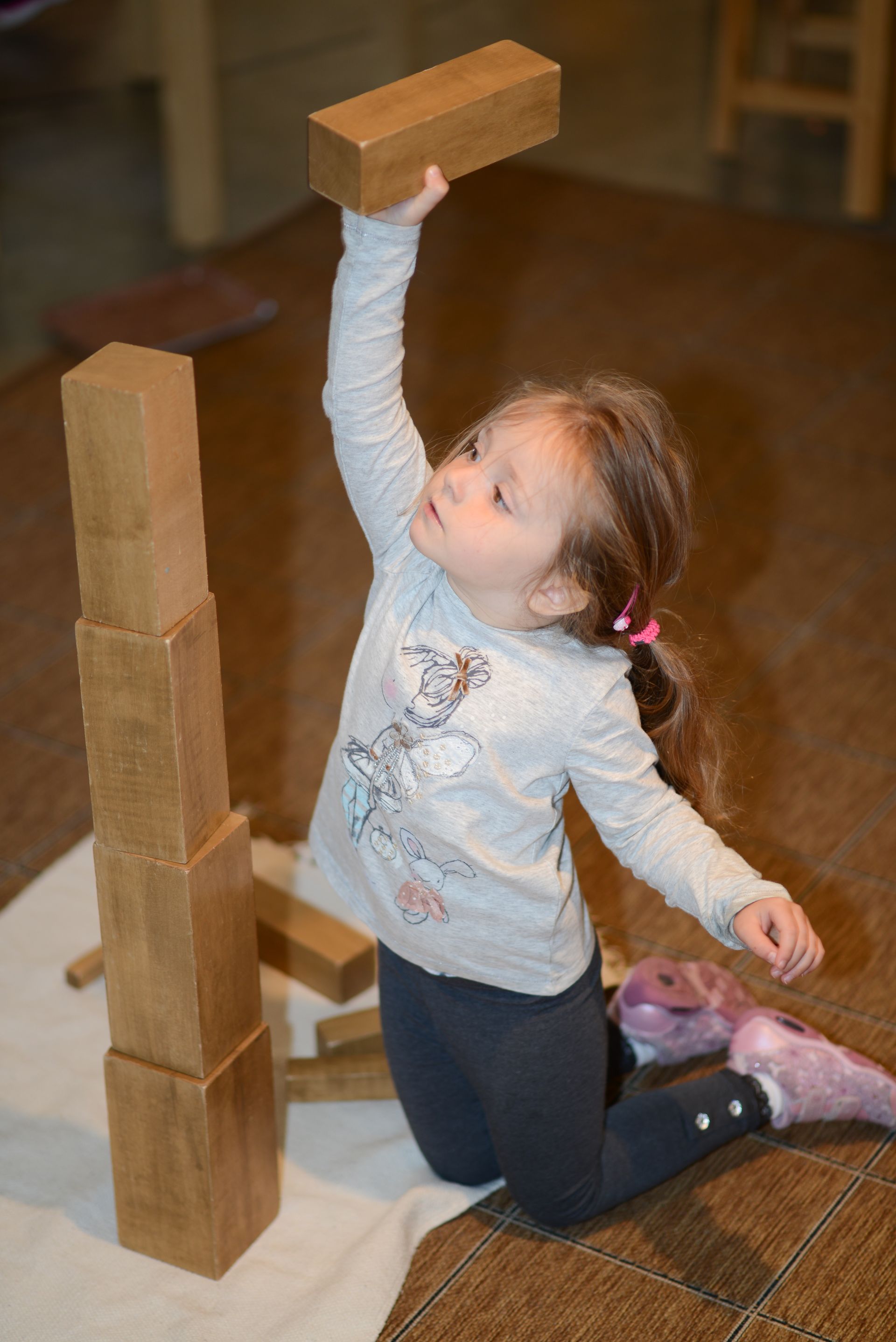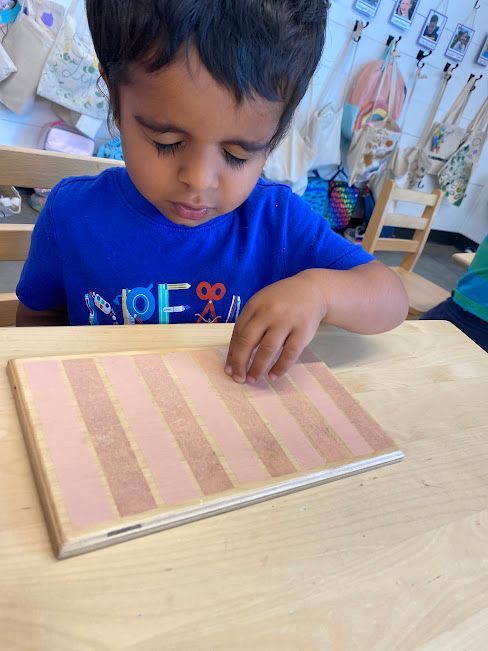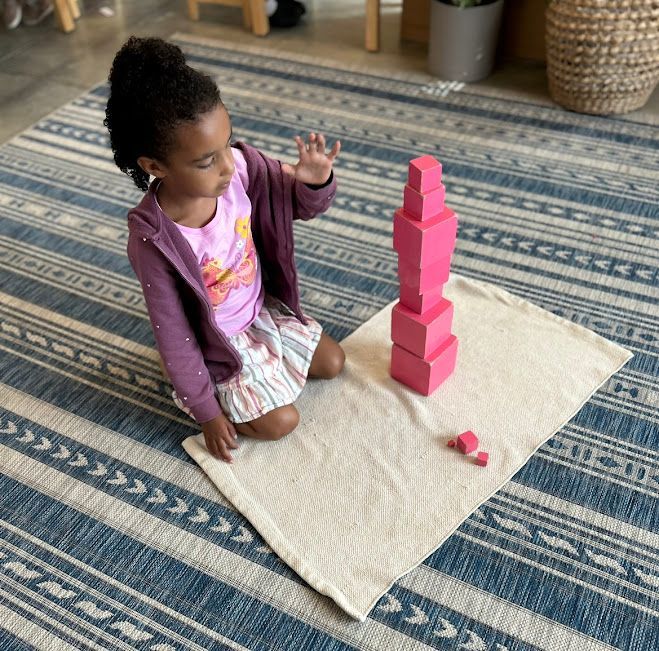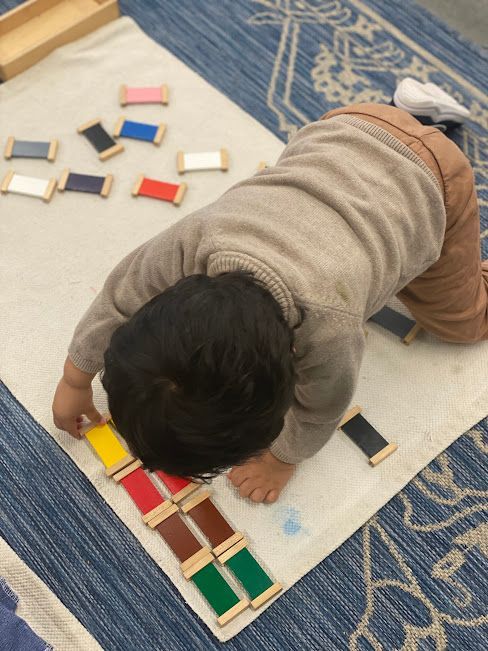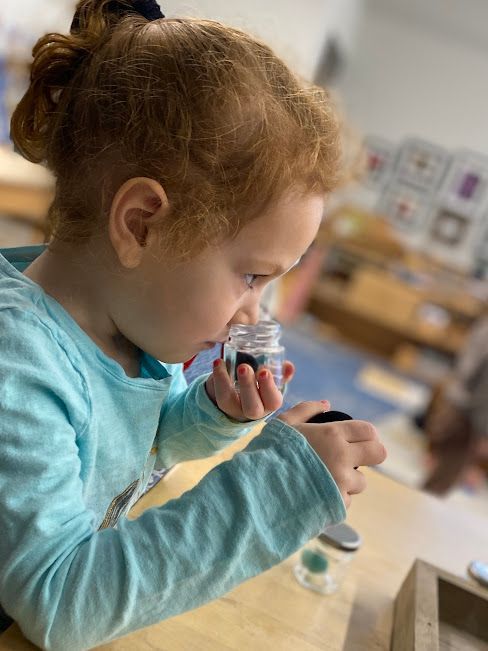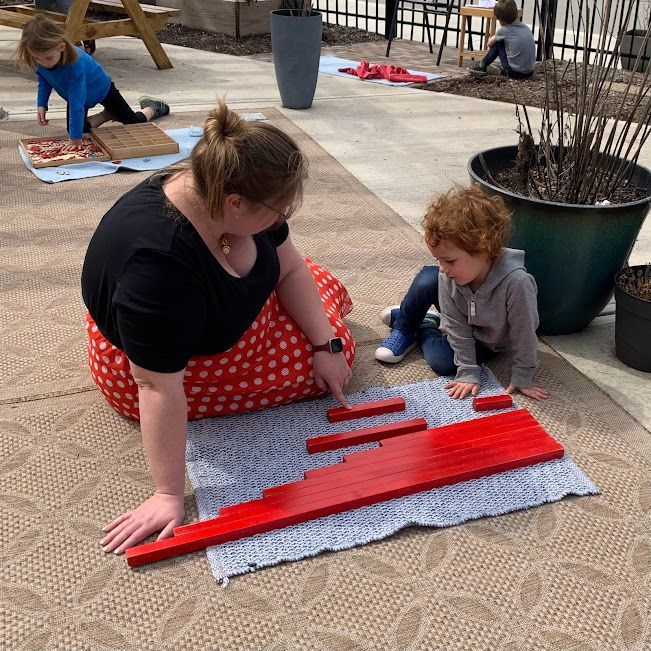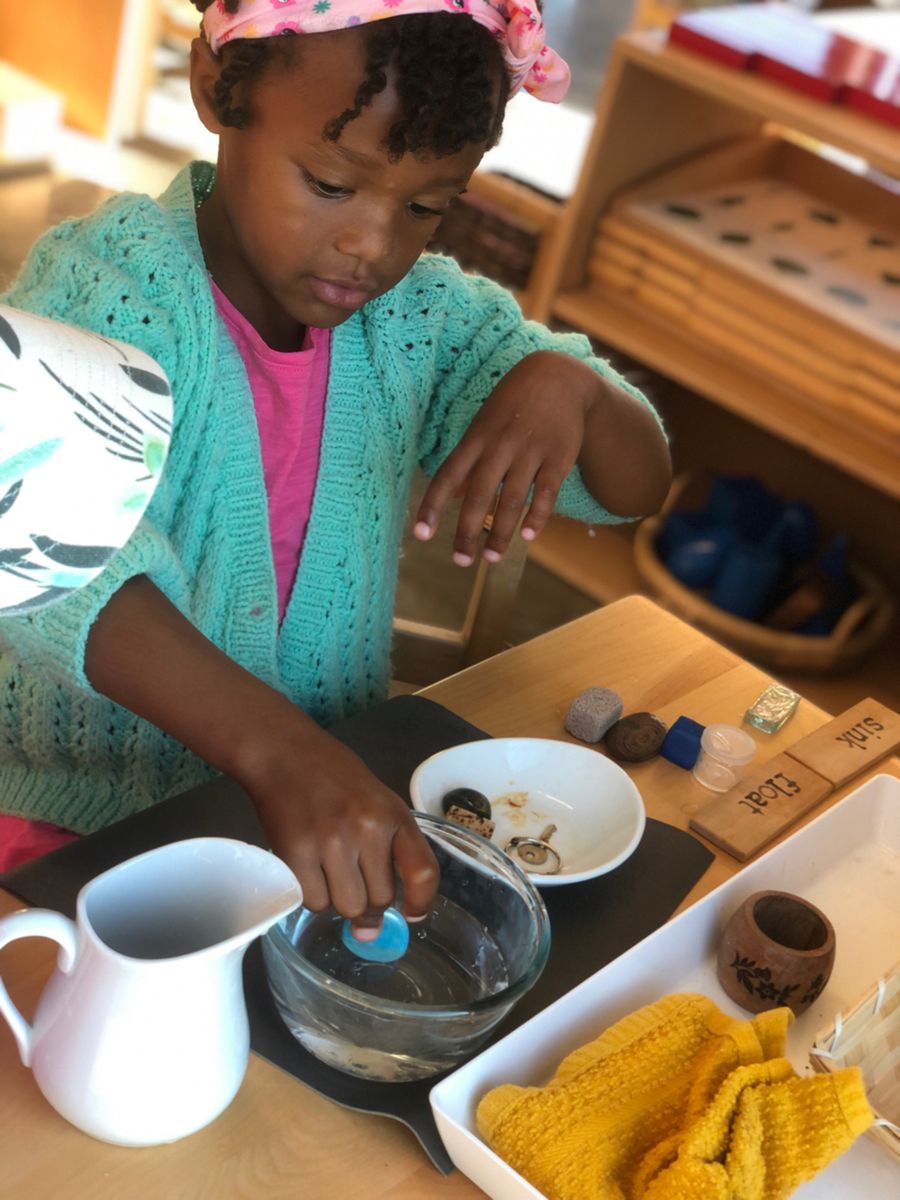"Any object that we wish to use for the education of the senses must necessarily present many different qualities such as weight, texture, colour, form, size, and so forth. How are we to isolate from many qualities one single one so that attention may be focussed on it? This is done by a series and its gradations; the objects are identical among themselves with exception of the variable quality which they posses."
DR. MARIA MONTESSORI
Often when you walk into a traditional preschool or public school setting plenty of decorations or posters are on the walls. In a classroom for the youngest child, one might find a large, red, triangle with the number 1 placed in the middle taped to the wall. The next poster may have a blue, square with the number 2 in the middle. When you say to the child, "This is red.", he may have no idea you are speaking about the color versus the shape or the symbol within. In the Montessori classroom, we use the term isolation of quality. This means that there is only one component that makes part of any given material unique. Each material isolates a specific, single ‘quality.’ In order to train a specific sense, it is necessary to only use that specific sense in the exercise. If, for example, we want to train the child’s ear to distinguish different sounds or matching sounds, we do this by use of the bells. The bells are each made of the same material, same shape, same color and same size. The only difference in each bell is the different note or sound each one makes. This allows the child to match the bell sounds by use of his ears rather than his eyes, as is the case in many musical instruments or toys for the child that may have each note color-coded. This is what is meant by isolation of quality.
“The perfecting of these exercises consists in removing as far as possible all distracting factors. It enables a child to engage in an inner and external analysis that can help him acquire an orderly mind.”
Dr. Maria Montessori, Discovery of the Child, p. 102
Another example of this is the Brown Stair. The Brown Stairs are 10 wood, rectangular prisms that are all painted or stained brown. The only varying quality is the width of each prism. We use the language "thick" versus "thin" when identifying the prisms. This allows the child to quickly distinguish the difference and gain understanding of what thick and thin mean. In one lesson given with this material, a child responded by letting me know, "His grandpa was really, really thick!". This is a common occurrence through the Montessori materials and only aids the child in developing vocabulary and understanding of various abstract language concepts and ideas.

